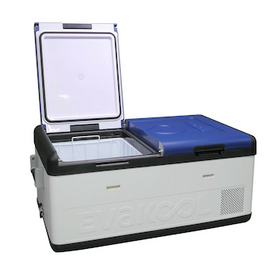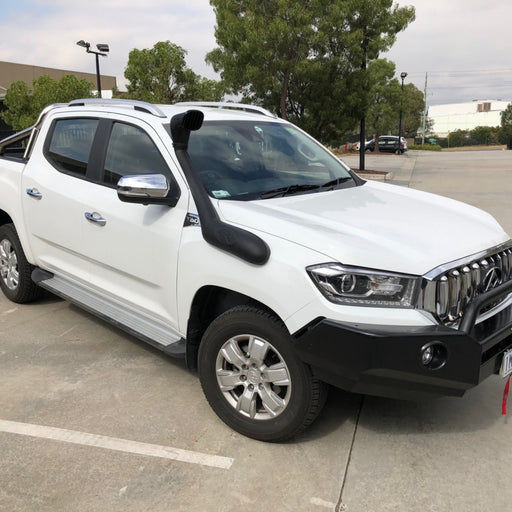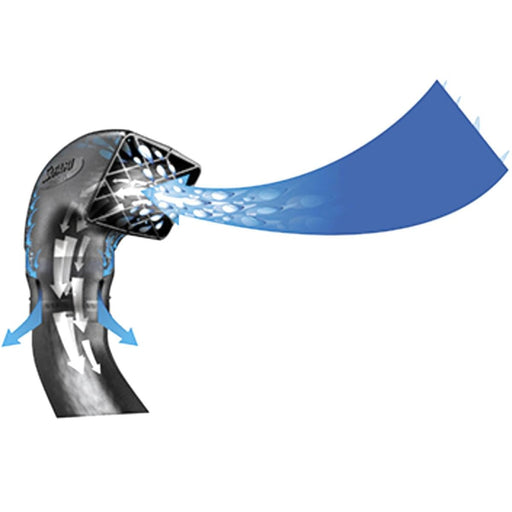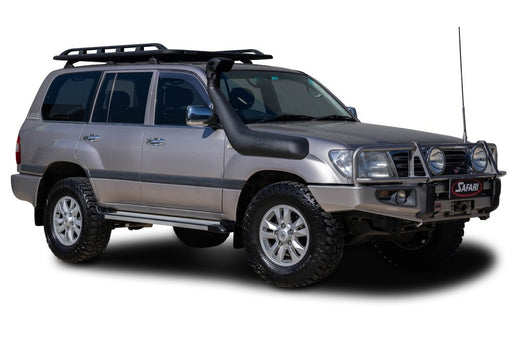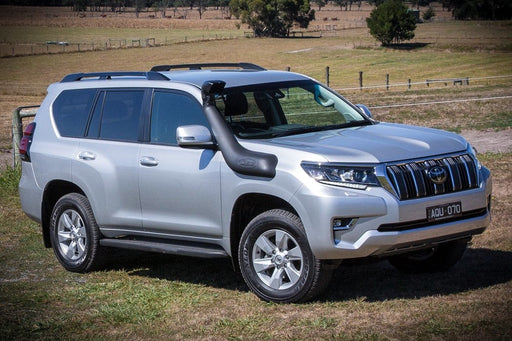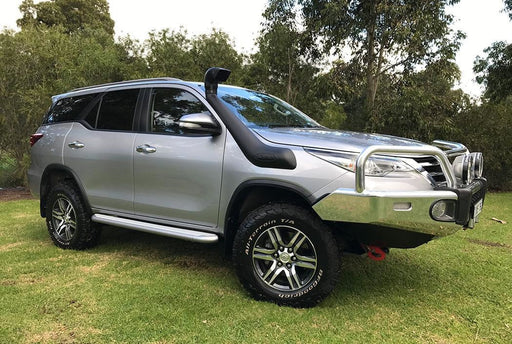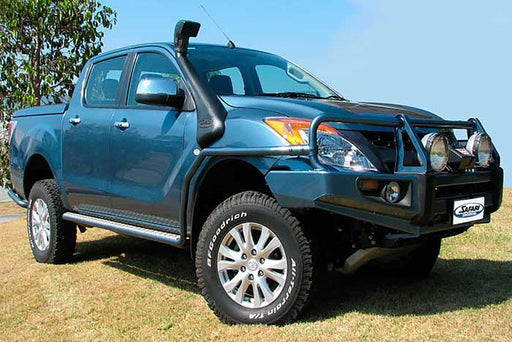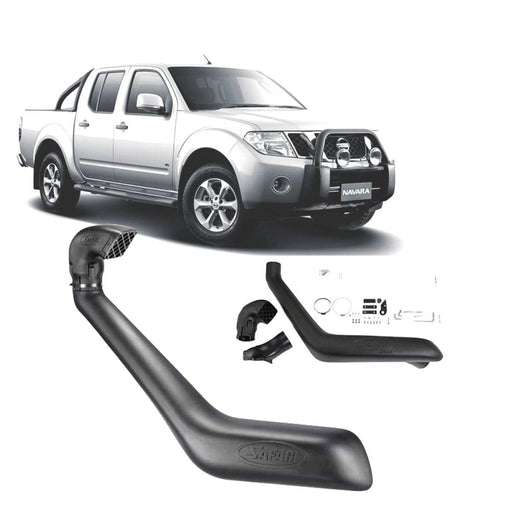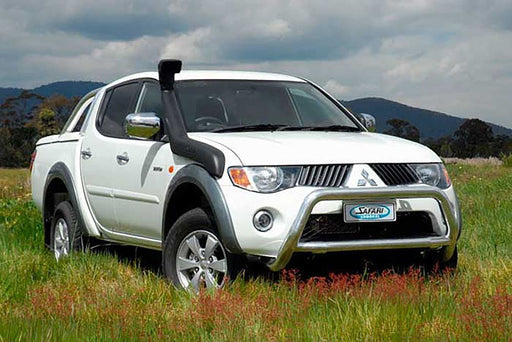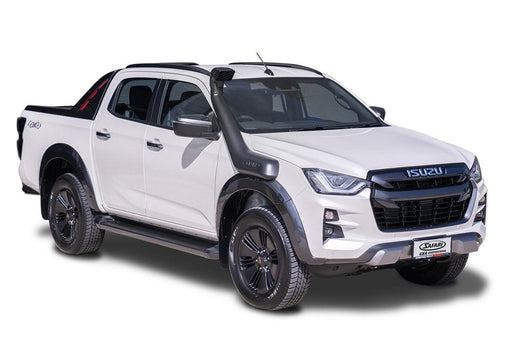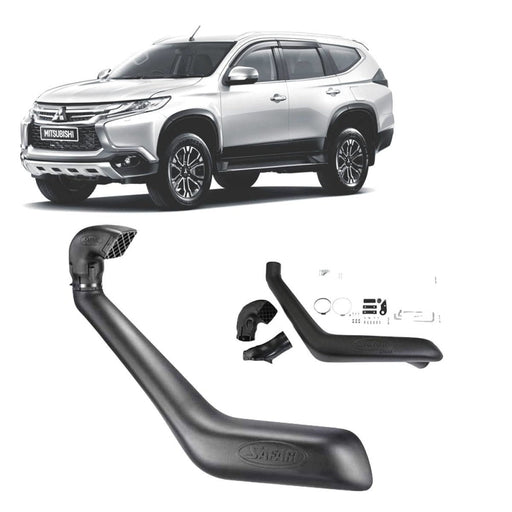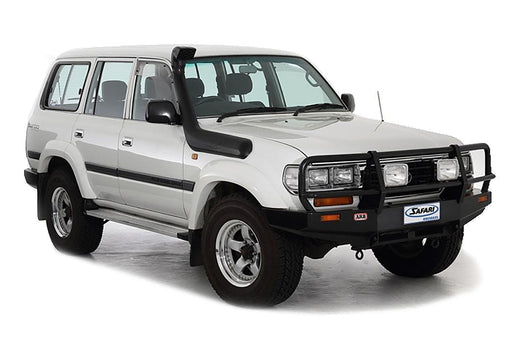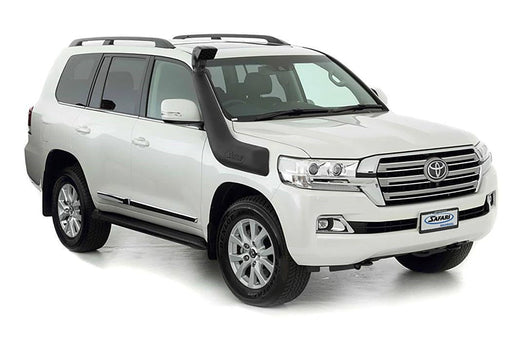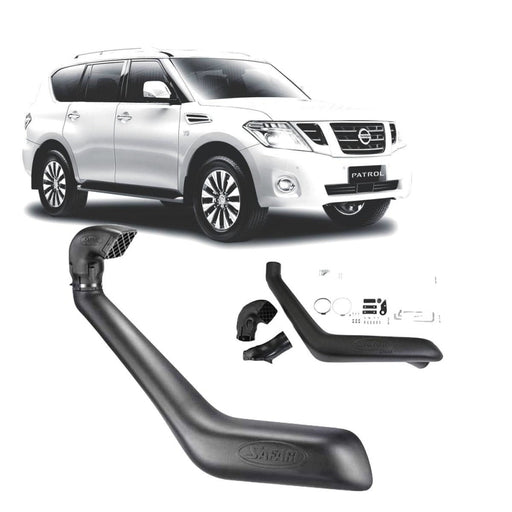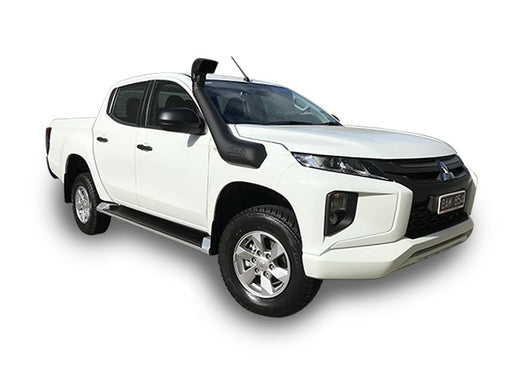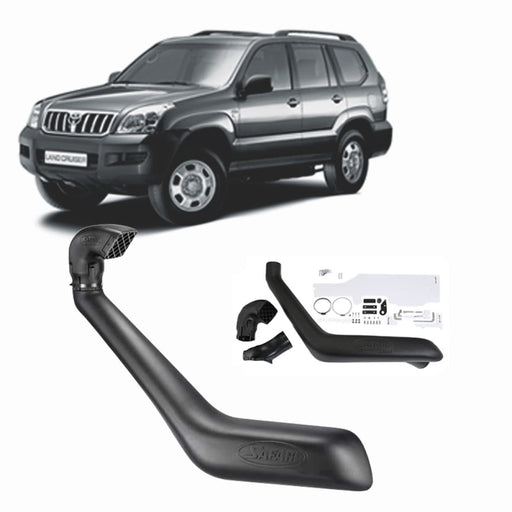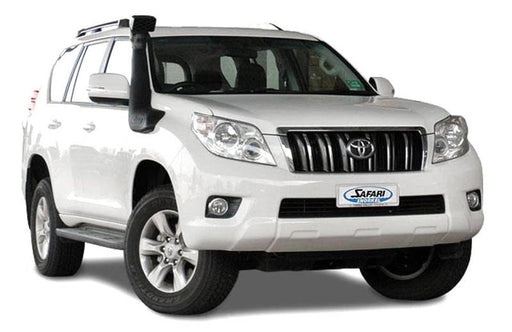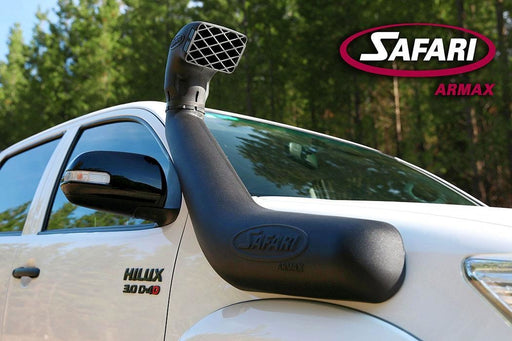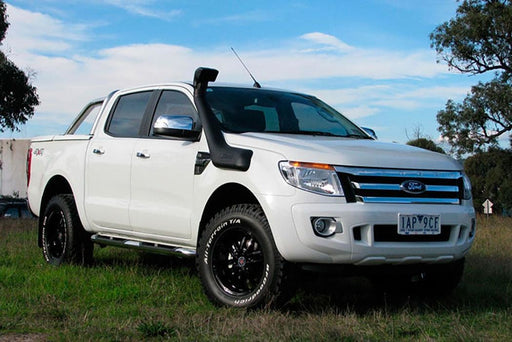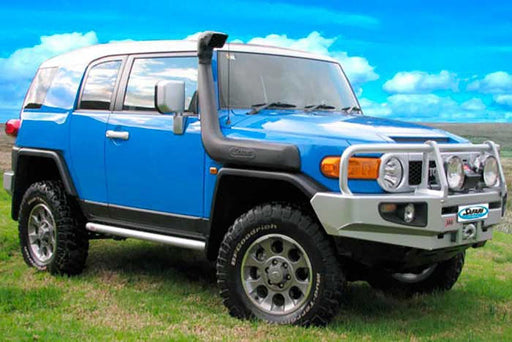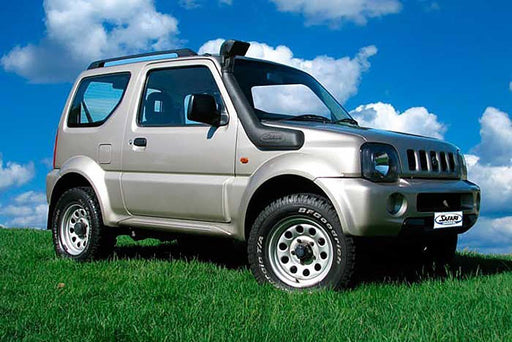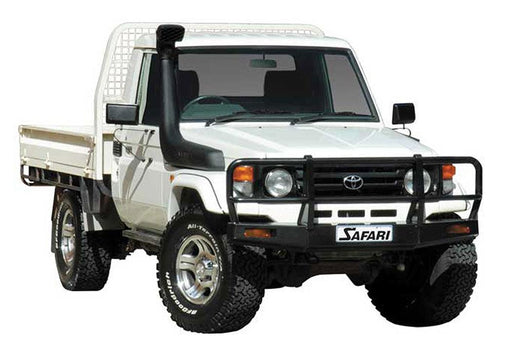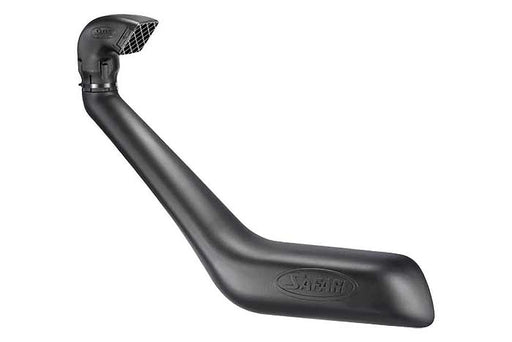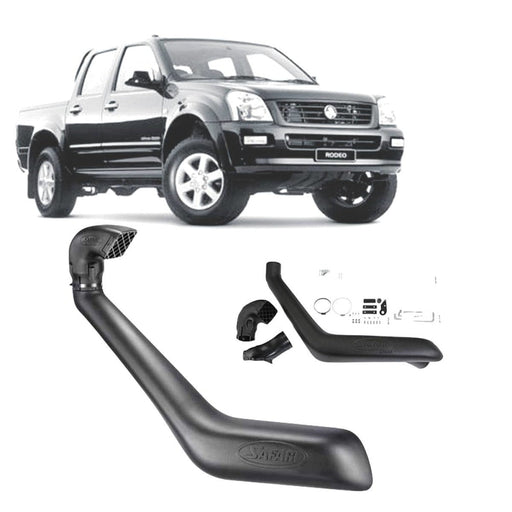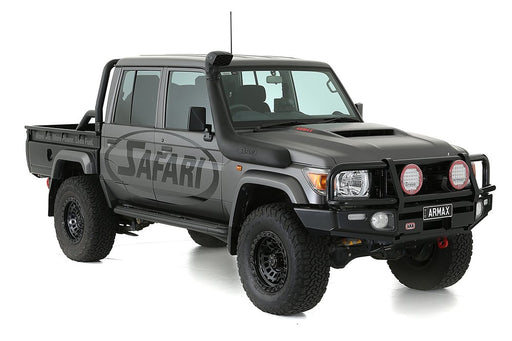4x4 Snorkels - Do You Need One?

There’s some confusion surrounding 4×4 snorkels, and exactly what purpose they serve and whether or not a snorkel for your 4×4 is really all that necessary. We take a deep dive into the world of 4WD snorkels. We look at the different types of snorkels, the differences between stainless steel snorkels and plastic (or poly) snorkels, considerations when it comes to installing a 4×4 snorkel and much more.
As always, if you have any questions feel free to reach out via our contact page. We’d be happy to help.
TABLE OF CONTENTS
- What is a 4x4 Snorkel?
- Fuel Consumption with a 4×4 Snorkel
- Should I Worry about Water Ingress through my 4×4 Snorkel?
- What are the different types of Snorkels?
- Plastic Snorkels vs Stainless Steel Snorkels
- Installing a 4x4 Snorkel
- 4×4 Snorkel Costs
- Conclusion
What is a 4×4 Snorkel?
Essentially, a 4×4 snorkel is simply a raised inlet pipe that feeds air from the roof height of your vehicle, down to the air-box in your engine bay. Engine’s run at their best when they’re fed lots of cool, clean air. And so it stands to reason that air taken in from within the engine bay is typically hot and full of dust, grease and dirt particles. This is less than ideal for an engine. While this is a problem pretty much anywhere you drive, it is obviously most problematic when driving off road. And this is where a snorkel comes into play.
Instead of your engine pulling air in from the engine bay, it instead relies on the snorkel to feed it cooler and cleaner air from higher up, usually around the roof height of your vehicle. It also usually provides more airflow than what your vehicles air-box, without a snorkel, is able to take in.
Water crossings are another reason that a 4×4 snorkel is a must-have on your vehicle. If you’re out in your 4WD, there’s a very high probability that you’ll come across a river or at the very least a significant puddle that requires crossing. You really need to be careful and conscious of water getting into your motor. Water ingress in a 4×4 engine is a death-note and many a 4WD has met it’s fate by drowning. It’s no joke.
With a properly installed snorkel, you’re able to cross rivers with confidence that your motor is going to be just fine on the other side (and that you’ll actually MAKE it to the other side). Please, if you don’t have a snorkel and you come to a river crossing, find another way.

And so regardless of whether you’re driving in the city, suburbs or off-road a snorkel can improve the efficiency of your engine by pulling in clean, cool air, providing more power and better performance.
Fuel Consumption with a 4×4 Snorkel
Whether or not fuel consumption is improved from the use of a 4×4 snorkel is debatable. Some brands go out of their way to advertise it as a feature, while others don’t mention it at all. And depending who you talk to in the 4×4 community, you’ll hear both sides.
Should I Worry about Water Ingress through my 4×4 Snorkel?
As mentioned earlier, if water gets into your motor is can lead to damage and even complete engine failure. A snorkel is a vacuum system, and it is inevitable that water will make it’s way in.
To prevent the water reaching the engine, most 4×4 air-boxes have a water drain hole built in, to allow water to escape. Depending on the snorkel, there are often drainage holes or slats cut into the head of the snorkel to allow further drainage. Prior to installation it’s best to check your air-box to make sure there is a drainage hole.
Meredith Metalworks have designed a water diverter that’s specifically designed to push water out. The water diverter uses the intake air pressure within the snorkel to force 98% of the water to the walls and downwards into the water diverter and out of the opening. The water diverter fits inside the inner guard between the snorkel and air-box, replacing the straight pipe section.

Meredith Metalworks Water Diverters
Lastly, if you’re worried about water ingress, get yourself a snorkel rain sock/filter. These are a great pre-filter to keep additional dust and crap out of your air-box, and also help as a rain guard.
What are the different types of Snorkels?
There are primarily two types of 4WD snorkels available, polyethylene (or plastic) snorkels and stainless steel snorkels. Plastic snorkels are the most popular 4×4 snorkels due to their availability, ease of use, and price point, while stainless steel snorkels are newer to the market and are usually more expensive and often require lead time to manufacture.
Aside from the snorkel material, snorkels also come in different diameter sizes. Our snorkels start at 3.5 inch up to 5 inch. The idea is that the larger your inlet and pipe diameter is, the more air will pass through, and the more air your engine receives. The standard snorkel size is 4 inch, but it will vary from brand to brand and vehicle.
Stainless Steel vs Plastic Snorkels
The difference between a plastic snorkel vs a stainless steel snorkel is fairly obvious. While they both serve the same purpose (to provide your motor with lots of cool, clean air) there are a few points of difference worth mentioning.
• Snorkel Aesthetics
While the look of a snorkel is obviously personal preference, the popularity of the stainless steel snorkel aesthetic is growing. A brand such as Meredith Metalworks stainless steel snorkels (see here) are designed to be recessed into the guard making them follow the body lines of your vehicle, presenting a sleek, smooth finish.
The good quality stainless steel snorkels (such as those from Meredith) are also designed to be completely seamless, which adds to the overall modern and classy look of the vehicle it’s on. Stainless steel snorkels usually come in either powder coasted black or a brushed/polished silver chrome finish.
You have a little less choice aesthetically when it comes to Plastic snorkels, like those from the fantastic Safari 4×4 brand. Plastic 4WD snorkels come in black and are pre-moulded to the guard, meaning they usually sit a little more flush to the vehicle than their stainless steel counterparts.

• Snorkel Sound
Another difference between a stainless steel snorkel and a plastic one is their sound. 4WD engines take in a huge amount of air, and this can be directly heard through the snorkel, especially if the snorkel head is backward facing (stainless steel snorkels generally always face backwards, while plastic snorkels often provide the option of backwards or forwards facing). This sound is most evident when changing gears with a turbo at higher speeds.
Some will appreciate the noise produced from a stainless steel snorkel, especially if your vehicle has been modified to take in more air, however it’s definitely not for everyone.
Plastic snorkels tend to be a lot quieter. Again, it’s personal preference.
• Snorkel Strength
The strength of a snorkel is important in two areas, direct physical damage from an external source and long term damage from the elements. The first can come in the form of a nasty branch hitting your snorkel and either cracking it or knocking the head off (or both!). Having your 4WD snorkel damaged by a stray branch is fairly uncommon, but it can still happen.
Not surprisingly, a stainless steel snorkel is going to be able to take a lot more punishment out in the bush than a plastic model. Realistically it’s unlikely your plastic snorkel will get damaged from a stray branch, but it can happen and that’s one place where a stainless steel snorkel wins the race.
The Meredith Metalworks snorkels are made from 316 Marine Grade Stainless Steel and are built to last many years without signs of corrosion and degradation. They will also stand up against UV damage from the sun, and other elements.
Safari 4×4 snorkels are also protected against the harsh Aussie sun with their own Industrial Spec UV Stabilised Polyethylene used on their snorkels, so UV damage should not be a factor.
Installing a 4×4 Snorkel
Snorkel installation difficulty and time varies between the type of snorkel, and the vehicle. The steel models will usually take a little longer as they often require more of the guard to be cut away than the plastic options. The plastic snorkels are usually moulded to the guard of the vehicle and so attaching them is a faster process and requires less work.
While installing a snorkel yourself is definitely possible, you do need to be fairly confident in your own ability. Depending on the snorkel and vehicle, installation can require some dismantling of panels, drilling, and cutting, and if not done correctly can lead to damage of the vehicle and snorkel.
We always recommend that if you’re not 100% confident, you rather take your 4×4 to a professional for snorkel installation. Stainless Steel snorkels are known to take longer to install and require a little more know-how, while pre-made plastic snorkels are often a lot simpler to fit and take less time.
Depending on the snorkel and vehicle, snorkel installation can take anywhere between 2-6 hours.
4×4 Snorkel Installation Costs
As with most vehicle oriented work, the cost comes in the labour. It's usually a one man job and if your local mechanic has some experience with snorkel fittings it shouldn't take too long. With that said it's very difficult to provide a cost estimate for getting a snorkel installed. The time will vary based on the type of snorkel, the vehicle it's going on, and any potential obstacles that might come up with that combination. Your best bet is to give your local garage a call and ask them for a quote.
As of 2023, Meredith Metalworks in WA provides installation services starting at $250.00.
4×4 Snorkel Costs
A good quality plastic snorkel will cost you anywhere from $350 to $700 from a reputable brand such as Safari 4×4.
A stainless steel 4×4 snorkel will set you back substantially more, and usually begins around $850, and go up from there. As always, you can find cheaper brands and options out there, but as with anything else, you get what you pay for.
Considering this accessory is going to be feeding air to your engine, it would be wise to not take the cheap route, lest you end up paying for it later. The quality of the materials and components, and the craftsmanship in their design should be a deciding factor in your final decision.
Ideally you want a snorkel that once it’s installed, it remains on your vehicle until you either sell the 4WD, or it’s decommissioned. The last thing you want is to have to remove the snorkel from your vehicle after a year or two because it starts to crack from the heat, or substantially discolour. You want to install it, and forget about it.
Conclusion
If your vehicle is primarily used on normal urban roads a snorkel is definitely not a necessity. In fact even if you are a light off road user every now and then, your vehicle and engine will be just fine. After all it’s built to work as it comes.
However, for those who want to get the best out of their vehicles, and give their engines the greatest chance of a long life, a snorkel really is a great investment. Regardless of which direction you go, poly or stainless steel, your motor will thank you for it in the long run.
Be sure to check out our extensive range of poly and stainless steel snorkels here. And as mentioned at the start, if you’re still unsure and would like to discuss options please let us know via the contact form here. We’d be happy to assist.

